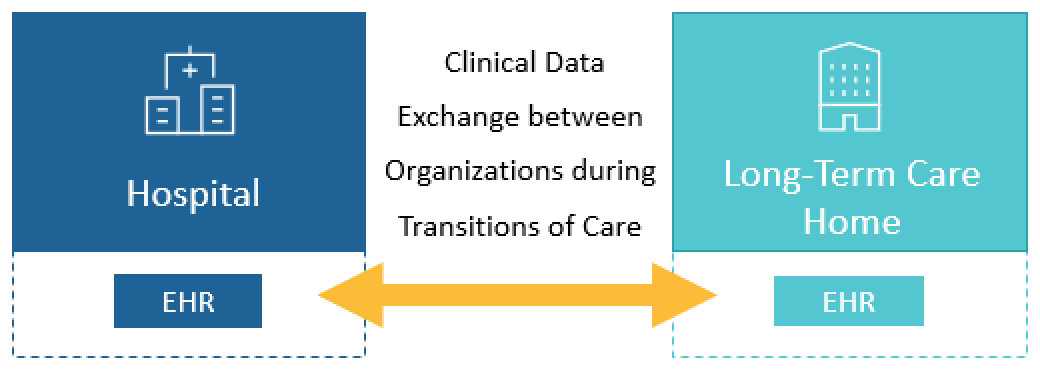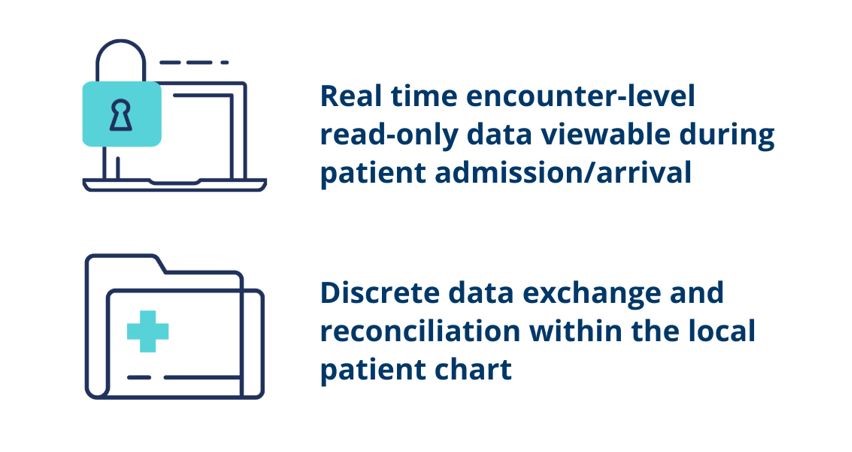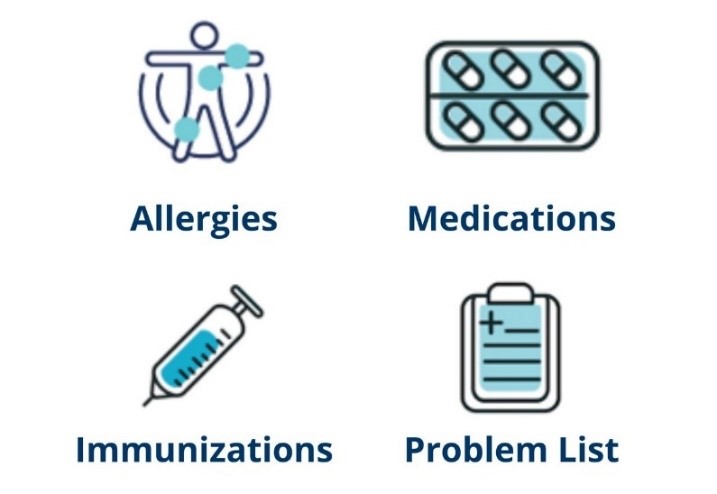Our Solution
As an industry and market leader in supporting the delivery of elder care with their cloud-based electronic health record software, PointClickCare’s Post-Acute Care Network Management integration software was chosen to facilitate the exchange of clinical information. PointClickCare has greater than 90% of the long-term care home electronic medical record market in Ontario. The Post-Acute Care Network Management solution is being implemented in conjunction with two health information exchanges (or equivalent) to enable the transfer of clinical information between different medical record software platforms. Any time a patient or resident visits a participating hospital or long-term care home to receive clinical care, their care provider will have real-time, electronic access to their secure, clinically pertinent and relevant health information.

Ontario’s Opportunity
In response to the demand for a more integrated system, the province’s digital health infrastructure is advancing by adopting policies and guidance on establishing standards that serve to address information needs for health service providers and Ontarians.
For Patients
When more delivery partners integrate their digital health assets with each other, increased access to accurate and updated health information results in better care for patients.
For Health Service Providers and Ontario Health Teams
Additional system integration supports efficiencies for administrative documentation, lessening the burden on our healthcare system. The secure exchange of clinical information enhances interoperability and accessibility across the province for all healthcare providers. Integration can also improve the use of other digital health tools, and the coordination of healthcare services.
For the Ministry of Health & Ministry of Long-Term Care
Both Ministries will capture value from the investment by further supporting the needs of service providers and patients through improved interoperability among the province's digital health assets.
Why is Health Information Exchange Important Now?
Medical records and clinical documentation have transitioned from paper to electronic charts through sophisticated software platforms. Sharing clinical documentation between healthcare organizations has traditionally involved printing documents on paper and then either faxing, or sending documents along with the patient at the point of transition. Subsequent phone calls between healthcare providers are also likely to occur due to incomplete or missing information. This process is complex and time consuming, and creates opportunities for unnecessary delays, or worse, potential patient safety risks.
Benefits to Long-Term Care and Hospital Staff
The bi-directional exchange of patient health information will provide timely access to clinical data at the points of transition between care settings. Clinicians will have better awareness of the patient or resident’s clinical condition upon arrival at the healthcare facility. An up-to-date digital summary from the sending healthcare institution should reduce the need for the patient to reshare their medical history and expedite the transfer process. This should result in clinical care being delivered more quickly upon patient and resident arrival. Through the completion of data reconciliation or importing, clinicians at both the hospital and long-term care home will spend less time manually transcribing orders and information from paper. This process will facilitate a continually updated electronic health record that will follow the patient as part of their care journey.

Project AMPLIFI supports the exchange of discrete data for the following information categories:


